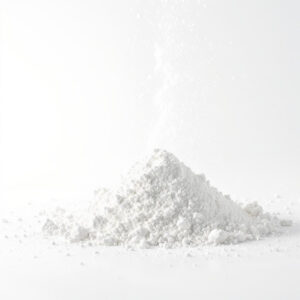Throwing a Baseball into Orbit: Possibilities and Consequences
Introduction
Have you ever wondered what it would take to throw a baseball around the entire Earth? While it sounds like the stuff of science fiction, this thought experiment can teach us a lot about the principles of physics and the nature of our planet. This article delves into the fascinating concept of launching a baseball into orbit, exploring the required force, the mechanics involved, and the potential consequences. By examining this scenario, we can gain a deeper understanding of orbital mechanics, Newton’s laws of motion, and the broader implications for space and physics.
Orbital Mechanics
To understand what it takes to throw a baseball around the Earth, we need to grasp the basics of orbital mechanics. The critical factor here is achieving the orbital velocity, which is the speed needed for an object to enter a stable orbit around a celestial body—in this case, Earth.

The Physics of the Throw
To translate this velocity into a practical force, we need to consider the mass of a standard baseball, which is about 0.145 kg. According to Newton’s second law, the force required is:

Consequences and Side Effects
Effect on the Baseball: If a baseball were thrown at the required velocity in a vacuum (neglecting air resistance), it would enter a low Earth orbit (LEO) and continue to orbit indefinitely. However, within the Earth’s atmosphere, the baseball would experience extreme heating due to atmospheric drag, causing it to burn up before reaching orbital velocity.
Effect on the Thrower:
Newton’s third law states that every action has an equal and opposite reaction. Thus, throwing the baseball with such immense force would result in a recoil force of 11471.5 N on the thrower. This recoil could cause severe injury or even death, highlighting the impracticality of achieving such a feat without mechanical assistance.
Effects on Earth
While the immediate impact of throwing a baseball into orbit might seem minimal due to the vast difference in mass between the Earth and the baseball, several broader implications and potential consequences on Earth warrant further exploration.
Negligible Impact on Earth’s Orbit: Given the Earth’s massive size (approximately \(5.972 \times 10^{24}\) kg), the act of throwing a 0.145 kg baseball would have an imperceptible effect on the planet’s orbit or rotation. The kinetic energy imparted to the baseball (about 4.54 million joules) is trivial compared to the Earth’s total energy. However, in a highly controlled theoretical framework, repeated actions of similar magnitude over incredibly long periods might have a cumulative effect, although this remains in the realm of pure speculation.
Impact on the Atmosphere: If the baseball were thrown within the Earth’s atmosphere, its velocity would create significant shockwaves due to the rapid displacement of air molecules. This could result in:
- Localized Shockwaves: These shockwaves could cause temporary disturbances in the local atmospheric pressure, potentially affecting weather patterns in the immediate vicinity. The rapid movement could generate sonic booms, which are loud and can cause minor damage to structures and hearing impairments in humans and animals nearby.
- Thermal Effects: The frictional heating caused by the baseball moving at such high speeds through the atmosphere would lead to a significant rise in temperature along its path. This could ionize air molecules, creating a visible plasma trail similar to that seen during meteor re-entries.
Environmental Impact:
- Air Pollution: The heating effect could lead to the combustion of air pollutants, resulting in localized areas of increased air pollution. However, this would be transient and localized.
- Wildlife Disturbance: The sudden loud noises and shockwaves could disturb wildlife, especially in sensitive ecosystems. Birds and other animals might be disoriented or stressed by the sudden disturbances.
Space Debris Contribution:
If the baseball successfully enters orbit, it becomes a piece of space debris. Space debris poses significant risks to satellites, spacecraft, and the International Space Station (ISS). Even a small object like a baseball, traveling at orbital velocities, can cause considerable damage upon collision with other objects in space. This emphasizes the importance of tracking and managing space debris to ensure the safety of current and future space missions.
Cultural and Psychological Effects:
- Public Fascination and Fear: Such an event would likely capture the public’s imagination, leading to widespread fascination with the scientific and technological aspects of achieving orbital throws. However, it could also invoke fear or concern over the potential misuse of such technology, especially if perceived as a weapon.
- Policy and Regulation: The theoretical possibility of achieving such high-velocity throws could lead to discussions on new regulations and policies
Conclusion
Throwing a baseball into orbit is a thought-provoking exercise that underscores the incredible forces involved in orbital mechanics. While the required force is far beyond human capability, this theoretical exploration highlights the principles of Newton’s laws of motion and the challenges of space travel. Although the practical consequences on Earth would be negligible, the scenario emphasizes the importance of considering space debris and atmospheric effects in real-world space missions. Ultimately, this thought experiment not only deepens our understanding of physics but also sparks our imagination about the possibilities of human achievement in space exploration.
Latest contents

Is Creatine Safe?
Creatine in 2025: Beyond Muscles — What Medical Science Really Says More Than a Gym Supplement Ask the average person what creatine is, and they’ll

How to Choose Between Notion and Obsidian in 2025
Table of Contents Notion vs. Obsidian Which Note-Taking App Is Best for Your Brain? In an age where information isn’t just available but constantly rushing

BECOME WHO YOU WERE MEANT TO BE
How to Become the Person You’ve Always Wanted to Be The Truth Behind Becoming Most of us carry a quiet image in the back of


You could certainly see your skills in the work you write. The world hopes for even more passionate writers like you who are not afraid to say how they believe. Always go after your heart.
Really appreciated
I enjoy what you guys are up too. Such clever work and coverage! Keep up the very good works guys I’ve included you guys to my personal blogroll.
Thank you very much much for commenting and your support
I am lucky that I found this blog, just the right info that I was looking for! .
Just here to dive into discussions, share experiences, and pick up new insights throughout the journey.
I like understanding different opinions and contributing whenever I can. Interested in hearing new ideas and connecting with others.
I have been surfing on-line more than 3 hours today, yet I by no means discovered any fascinating article like yours. It is pretty worth sufficient for me. In my view, if all web owners and bloggers made excellent content as you did, the web shall be a lot more useful than ever before.
LMC Middle School https://lmc896.org in Lower Manhattan provides a rigorous, student-centered education in a caring and inclusive atmosphere. Emphasis on critical thinking, collaboration, and community engagement.